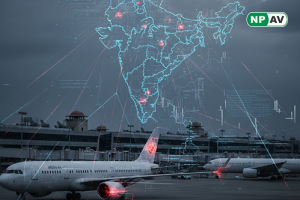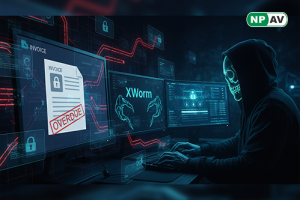Storm-0501 Ransomware Attacks: A New Threat to Hybrid Cloud Environments

Microsoft has recently highlighted a significant security threat posed by the threat actor known as Storm-0501, marking a concerning trend in ransomware attacks that extend into hybrid cloud environments.
Multi-Staged Attacks
Storm-0501 has been observed executing multi-staged attacks that compromise on-premises and hybrid cloud environments, allowing for lateral movement and data exfiltration. This method leads to a range of malicious activities, including credential theft, tampering, and persistent backdoor access, ultimately culminating in ransomware deployment.
Targeted Sectors
The group primarily targets various sectors within the United States, such as government, manufacturing, transportation, and law enforcement. This broad targeting underscores the increasing risks faced by organizations across different industries.
Ransomware-as-a-Service (RaaS) Model
Storm-0501 operates on a Ransomware-as-a-Service model, leveraging various ransomware strains, including Embargo, Hive, and LockBit. This allows them to utilize a suite of sophisticated tools and techniques developed by other threat actors.
Exploitation of Weak Credentials
The group exploits weak credentials and over-privileged accounts to transition from on-premises networks to cloud environments. By leveraging compromised credentials from services like Microsoft Entra ID, they establish persistent access and control over cloud resources.
Initial Access Techniques
Storm-0501 utilizes a variety of initial access methods, including exploiting vulnerabilities in widely used applications such as Zoho ManageEngine and Citrix NetScaler. By gaining administrative privileges, they can navigate and compromise systems effectively.
Credential Access and Lateral Movement
Once initial access is achieved, the group employs tools like Impacket and Cobalt Strike to extract and exploit credentials across networks. This extensive credential harvesting enables lateral movement within compromised environments.
Data Exfiltration and Ransomware Deployment
The threat actor uses open-source tools like Rclone to exfiltrate sensitive data, often renaming binaries to evade detection. Following successful data exfiltration, they deploy ransomware across the network, leading to substantial operational disruption.
Cloud Compromise and Backdoor Access
After gaining control over cloud accounts, Storm-0501 can create backdoors for ongoing access. By manipulating Microsoft Entra ID and utilizing SAML tokens, they can impersonate users and bypass security measures like multi-factor authentication (MFA).
Organizations must adopt comprehensive security measures, including:
- Implementing MFA and Conditional Access policies for all user accounts.
- Regularly updating and patching systems to mitigate known vulnerabilities.
- Monitoring for unusual access patterns or credential usage.
As ransomware threats like Storm-0501 evolve, organizations must remain vigilant and proactive in enhancing their cybersecurity posture. By understanding the tactics and methods employed by such actors, businesses can better prepare and defend against these sophisticated attacks.
Stay informed and protected with Net Protector Cyber Security. For more insights on protecting your digital assets, visit our website or contact us for expert guidance.






